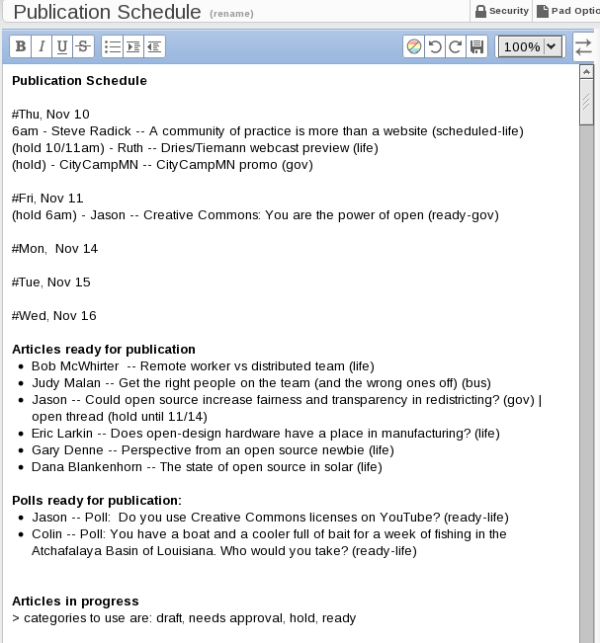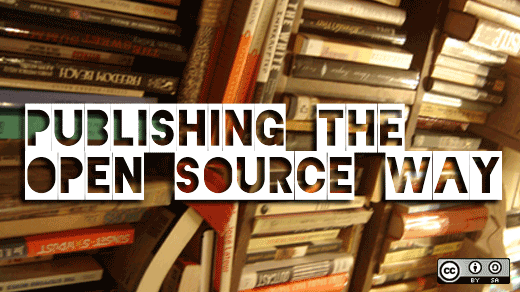Why would an editor let go of publishing power and give the master calendar over to a group of trusted people? That sounds like a disaster waiting to happen. But we did it. And it works. And this is another example of the power of open source.
At the beginning of July, we opened the opensource.com publishing calendar to all the moderators. It started with a prototype that quickly evolved and grew in popularity. Sharing what was scheduled for publishing and articles in the works was the first step in being more transparent between the different community moderators.
The old way wasn't working
For almost a year and a half, our Business moderator, Jeff Mackanic, held the master publishing calendar. It was an OpenOffice document that sat on his desktop. Sometimes it was a pen and paper or email, but the one master was only on his local machine. The only time the other moderators would know what was being planned was during our weekly moderator meeting or during one-on-one conversations. This worked fine at first.
Two things happened that made us change our ways:
- The moderators were starting to build up stores of future content
- There was a need for asynchronous coordination and synchronization
Enter intern
Another event finally triggered this change—Fourth of July vacation. Many of the moderators were out of the office, so we left the publishing calendar in the trusty hands of our intern, Bryan. During this time, we used rapid prototyping to test a solution.
I discussed some ideas with Bryan about a better way to coordinate our publishing before the break. We kicked around a few ideas, and he moved the ball forward to a successful solution. During the week of that vacation, we tried a new tool to coordinate our content. By the time all the moderators returned, we showcased the process and earned buy-in from each moderator.
The new way to publish
Our solution involved a collaborative document tool called Etherpad. It's simple to use, and that was a key to its success. Each moderator was invited to the publishing “pad” and could see content that was scheduled to be published. We empowered each moderator to fill in empty slots and make suggestions. As a project manager, I loved this!
Our format was simple—we had different sections to help us synchronize and coordinate content:
- An outlook for the next five days
- A list of content ready to publish
- A list of articles that are in progress
- An area for ideas, leads, or topics to explore
- A history of what was recently published
It took us a few weeks to nail down the formats and the sections that worked for us, but each moderator had input and helped us work towards a process that has been working great for our team.
Do you have a similar story from your organization?





1 Comment